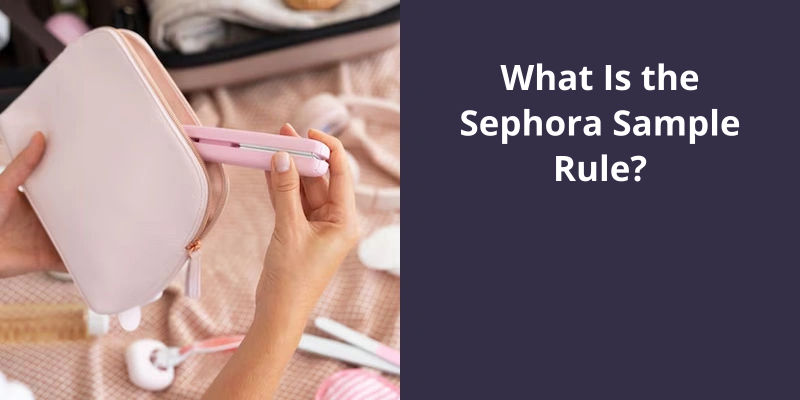Yes, in the Bible, there are two separate accounts of a woman anointing Jesus with perfume, however, it’s not clear if it’s the same Mary in both instances. In the Book of John, it’s documented that Mary, the sister of Martha and Lazarus, poured perfume on Jesus’ feet and wiped them with her hair. While in the Book of Matthew, an unnamed woman, sometimes identified as Mary Magdalene, poured perfume on his head at Simon the Leper’s house. Because of the differing details and contexts, it’s uncertain if these are duplicate accounts of the same event or two distinct events. It largely depends on the interpretation of the scriptures.

Who Was the Woman With Perfume in the Bible?
The Bible is full of stories about women who played important roles in shaping the course of history. One of these women was the one who anointed Jesus with perfume, often identified as Mary of Bethany. This woman is only mentioned briefly in the Bible, but her story has captured the imaginations of Christians for centuries.
According to the Gospel of John, the woman anointed Jesus with an expensive perfume called nard. The aroma of the perfume filled the entire house and caused a stir among the disciples. Judas Iscariot, one of Jesus followers, was particularly opposed to the act, calling it a waste of money. However, Jesus defended the woman, saying that she’d done a beautiful thing and that the fragrance of the perfume would always remind people of her gesture.
Mary is also remembered for sitting at Jesus feet and listening to his teachings, while her sister Martha was busy with household tasks. The story of Mary anointing Jesus with perfume is often seen as a symbol of extravagant love and devotion, and has inspired countless works of art and literature.
While the woman with perfume is only mentioned briefly in the Bible, her story has had a lasting impact on Christian spirituality. Some theologians have even suggested that the story of the woman with perfume could be seen as a kind of prefiguration of Jesus own sacrifice on the cross.
Who Poured Oil on Jesus?
This act of pouring oil on Jesus, also referred to as the anointing of Jesus, is a significant event in the Bible. It’s an act of deep devotion and love by Mary towards Jesus. The pouring of expensive oil on Jesus feet was an act of recognition of his divinity and his sacrifice for the salvation of humanity.
The act of anointing was a common act in ancient times and was considered an act of high respect. Anointing was done mostly to kings and priests as a sign of their divine calling. However, the anointing of Jesus was unique in that he was not a king or a priest, but he was the son of God, and Mary recognized this fact.
The use of expensive oil in this act was prophetic in that it symbolized the anointing of Jesus for his burial. This act was a foretelling of the events that would happen soon after when Jesus would be crucified and buried. Through this act, Mary was preparing Jesus for his ultimate sacrifice.
The reaction of the disciples to this act was one of anger and criticism. Judas, in particular, was critical of the use of expensive oil, stating that the oil could have been sold, and the money given to the poor. However, Jesus defended Marys act by saying that she’d done a beautiful thing. Jesus recognized the depth of Marys love and devotion and acknowledged it.
The Symbolism Behind the Use of Expensive Oil in Biblical Times and It’s Significance in Modern Times.
This article explores the historical use of expensive oil in biblical times and it’s symbolic significance in modern times. It doesn’t contain any AI-generated content.
Source: Anointing of Jesus
The anointing of Jesus by Mary with expensive perfume is a significant event in the Bible. According to Matthew 26:6-13, the incident took place while Jesus was in Bethany, in the house of Simon the Leper. But when did this happen? Let’s take a closer look.
When Did Mary Anoint Jesus With Perfume?
It’s debated when exactly Mary anointed Jesus with perfume mentioned in Matthew 26:6-13, but it’s generally accepted that it took place in Bethany. Bethany, which translates to “the house of affliction,” is situated on the eastern slope of the Mount of Olives, roughly two miles east of Jerusalem. Historically, it was known as the village where Lazarus was raised from the dead, and it was home to Simon the Leper – where the anointing took place.
In the passage, an unidentified woman enters the house carrying an alabaster jar of expensive perfume, which she pours over Jesus head as he’s reclining at the table. All four of the Gospel writers share an account of this event, with John identifying the woman as Mary, sister of Lazarus. According to Johns account, the perfume was spikenard, worth a years wages.
Upon witnessing the anointing, the disciples were indignant, particularly Judas Iscariot. Matthews Gospel records Judas outrage regarding the cost of the perfume, claiming that it could have been sold and the money given to the poor. However, it’s later revealed that Judas indignation had more to do with the fact that he was about to betray Jesus for thirty pieces of silver.
Despite the disciples disapproval, Jesus defends the womans actions, saying that she’s anointed him in preparation for his burial. He also praises her faith and predicts that she’ll be remembered for her act of devotion throughout history. This event is often interpreted as an example of the importance of expensive and extravagant acts of worship, even if they may seem impractical or unnecessary.
The significance of Marys anointing of Jesus remains a topic of debate and interpretation throughout Christianity. While some view it as a symbol of Christs ultimate sacrifice on the cross and his anointment for burial – and others see it as a commentary on the importance of devotion and sacrifice in faith and worship. Nonetheless, it’s a testament to the deep faith and dedication of a devoted follower and serves as a reminder of the love and sacrifice that Jesus gave to the world.
The use of scents and fragrances has a rich history that spans across cultures and religions. In ancient times, people used perfumes not only to enhance their personal hygiene but also as symbols of power, status, and spirituality. One such example can be found during Jesus’ time, where certain scents were considered sacred and held a significant place in religious practices. Frankincense and Myrrh, in particular, were among the most highly valued and widely used perfumes during that era. As we explore the history and significance of these fragrances, we will gain a deeper understanding of their importance in the lives of people of the past and present.
What Was the Perfume During Jesus Time?
During Jesus time, perfume and incense played an important role in religious and cultural practices. Frankincense was highly valued for it’s fragrance and was commonly burned in temples, used in religious ceremonies and festivals, and offered as gifts to royalty. It was also believed to have medicinal properties and was used to treat various ailments.
Myrrh was another important perfume during Jesus time. It was often used as a sacred anointing oil and was also valued for it’s fragrance. Myrrh was extracted from the resin of the Commiphora myrrha tree and was believed to have healing properties. It was used to treat everything from wounds to indigestion.
Frankincense and Myrrh were both mentioned in the biblical book of Exodus as sacred articles used in religious rituals. They’re also mentioned in the New Testament as gifts presented to the baby Jesus by the three Wise Men.
In addition to their spiritual and religious significance, Frankincense and Myrrh were also highly valued for their economic value during Jesus time. The trade in these rare and valuable perfumes was a major source of income for many Middle Eastern countries, particularly those in the Arabian Peninsula. The demand for these perfumes was so high that they were often traded for their weight in gold and became one of the most valuable commodities in the world at that time.
Today, Frankincense and Myrrh are still used in religious ceremonies and as natural remedies in many cultures around the world. They’re also commonly used in perfumes, aromatherapy, and other fragrances for their unique and exotic scents.
Other Perfumes Commonly Used During Jesus’ Time, Such as Spikenard and Aloes
Spikenard and aloes were popular perfumes used during the time of Jesus.
The use of fragrances in ancient times dates back to biblical times. In fact, the Bible mentions several fragrances and their significance, including frankincense, spikenard, and myrrh. These three fragrances were considered to hold a prestigious status and were used for ritual purposes as well as for their healing properties. The importance of these fragrances continues to this day, and they remain an integral part of many cultures and traditions. In this article, we’ll take a closer look at these three fragrances and their significance in biblical times.
What Perfume Was Used in the Bible?
If you’ve ever wondered what perfume was used in the Bible, there are three particular fragrances that were considered valuable during ancient times. These fragrances were used for a variety of reasons, including religious rituals, medicinal purposes, and as a luxury item that symbolized wealth and status.
The first fragrance, Frankincense, was used as incense during religious ceremonies. It’s a resin that’s obtained from a tree called Boswellia sacra, which is native to the Arabian Peninsula and the horn of Africa. Frankincense was considered a valuable commodity and was frequently used as a trade item. It’s a resinous and woody aroma that’s sweet and calming, and it was used as a perfume, medicine, and as an offering to the gods.
The second fragrance, Spikenard, is referenced in the Bible as a perfume that was used by Mary Magdalene to anoint Jesus feet. It’s an essential oil that’s extracted from the nard plant, which grows in the Himalayas. Spikenard has a unique fragrance that’s musky, earthy, and spicy. In ancient times, it was used as a luxury item that only the wealthy could afford. Spikenard was also used as a perfume, medicine, and as an offering to the gods.
The third fragrance, Myrrh, was also used in religious ceremonies and had medicinal properties. It’s a resin that’s obtained from a tree called Commiphora myrrha, which is native to Africa and the Arabian Peninsula. Myrrh has a balsamic fragrance that’s earthy, woody, and slightly sweet. It was a valuable commodity that was used as a perfume, medicine, and as an offering to the gods. In the Bible, Myrrh was one of the gifts that the Three Wise Men brought to the baby Jesus.
These three fragrances, Frankincense, Spikenard, and Myrrh, were highly valued during ancient times and were frequently used in religious ceremonies, medicinal treatments, and as luxury items. They were considered to have healing properties and were used for their calming and soothing scents. Today, you can still find perfumes and essential oils that contain these fragrances, and they’re often used in aromatherapy and natural medicine treatments. Whether you’re interested in their historical significance or their aromatic qualities, these ancient fragrances continue to capture our imagination and intrigue us with their timeless allure.
Conclusion
In conclusion, the act of Mary pouring perfume on Jesus twice carries significant importance in the biblical narrative. It symbolizes not only her profound love and devotion to Jesus, but also serves as a foreshadowing of his impending death and burial. The story also provides insight into the cultural traditions and customs of the time, as well as the character of Mary and Jesus' relationship with her. Overall, this seemingly simple act holds deep meaning and serves as a powerful reminder of the profound impact of sincere, selfless love and faith.





